10 Best Ways To Protect Your Hair While Sleeping (Easy Tips)
Avoid sleeping with damp locks and tie hair in easy styles like braids, loose buns, and twists.
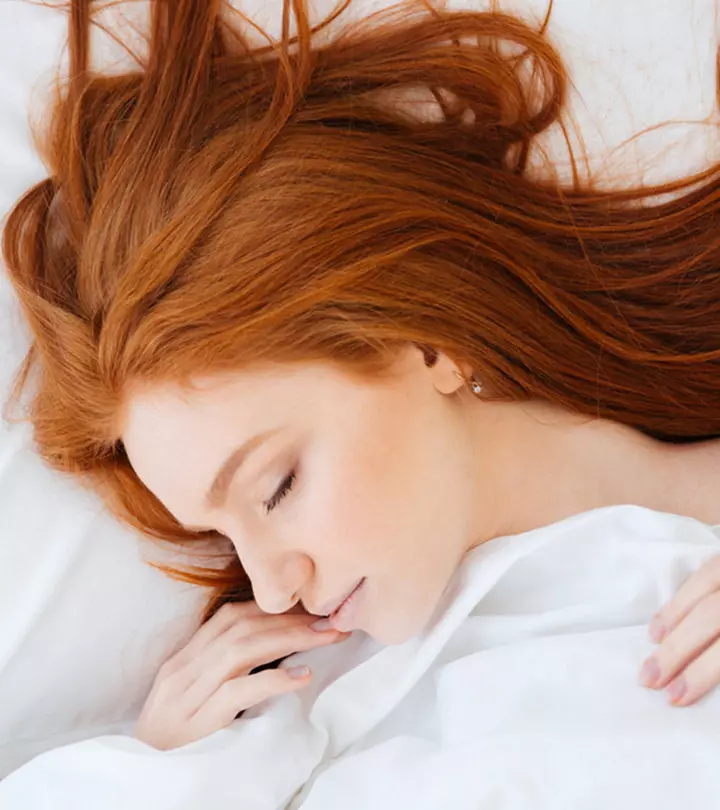
Image: Shutterstock
Do you hit the bed as soon as you feel sleepy but forget to attend to one of the most important aspects – protect your hair while sleeping? Skipping this important step can result in serious damage and breakage to your hair over time.
Your hair has three layers: Cortex, cuticle, and medulla. The medulla is the innermost layer covered by the cortex, surrounded by a cuticle. Finally, a cell membrane complex binds all the hair cells together (1).
Every human being sheds their hair daily. Well, how much? It depends on various internal and external factors you need to pay attention to. Your locks undergo many changes during the multi-stage growth cycle of your hair (2). So, you must wear your hair properly while sleeping to avoid breaking it.
You may not be able to control this cycle, but you can influence a few external factors that harm your hair. For example, going to bed with your hair can put your locks through undue stress and cause the strands to break off and fall off. If you are wondering how to wear your hair to bed, you are in the right place.
In this article, we will explain the 10 best ways to wear your hair to bed to prevent hair loss or breakage. Keep reading.
In This Article
10 Ways To Protect Your Hair While Sleeping
1. Avoid Damp Hair Before Bed Time
Is it bad to sleep with wet hair?
Let’s settle it for once and all. Yes! Hair fragility increases when it is wet. If you have a habit of washing your hair at night, you need to know how to style wet hair before going to bed. The protein bonds in your hair are weaker when the strands are wet, which makes them more prone to stretching and breaking (3).
So, the question here is, what to do with wet hair before bed?
Here’s how to sleep with wet hair without damaging it – dry your hair with a microfiber towel to remove excess water. Instead of using a brush, use your fingers to remove any knots and tangles. This is the best way to sleep with long hair without risking breakage and damage.
Use a conditioner post shampoo so that your hair is tangle-free.
2. Use A Hair Oil

Applying hair oil to your hair and scalp can give them a healthy dose of nourishment. This way, you will be able to protect your hair while sleeping as well since oils tend to tame down dryness and reduce friction between hair strands. This can go a long way in preventing unwanted hair loss.
Apply only a small quantity of hair oil as some scalps can become prone to dandruff and fungal infection with the use of oil.
 Quick Tip
Quick TipYou may apply coconut, argan, mustard, or almond oil to your hair before bed to keep it nourished and frizz-free.
3. Use A Silk Pillowcase
Wondering what to do with long hair while sleeping? Long hair is more prone to damage and breakage, which can be a result of friction. If you have been wondering how to sleep with long hair to avoid damage, then a silk pillowcase is the answer to your question.
The fabric composition of silk allows your hair to slide on it easily, without making it rough or brittle. Sleeping on cotton pillowcases is one of the leading causes of split ends and dry hair.
4. Use Hair Silk Cap For Sleeping
A silk hair cap protects your hair overnight. Wearing such a sleep cap for hair ensures that your hair is completely safe inside it. Further, it also prevents tangling of hair and reduces the amount of friction between the strands.
Thus, you should invest in a good quality sleep hair cap that can help prevent breakage and split ends.
Abbi-Jo, a blogger, emphasized the need for hair protection against common threats like air, garments, pillowcases, and even their own touchy-feely habits. She reveals her commitment to hair care in her blog, writing, “I not only wrap at night for bed, I do it whenever I’m laying down watching TV or getting my fix of YouTube videos (i).” She highlighted the significance of silk or satin scarves in countering the drying effect of cotton materials, explaining how cotton absorbs moisture and is less suitable for hair.
Nimi, another blogger, also emphasized the significance of using silk or satin scarves, bonnets, or pillowcases, as these materials are exceptionally gentle on the hair. She writes, “Wearing my silk scarf to bed every night is one of my resolutions for the year that I shared with you (ii).” She further explained how they provide protection against the potential damage caused by the fibers of pillowcases and bed sheets.
5. Remove Hair Accessories
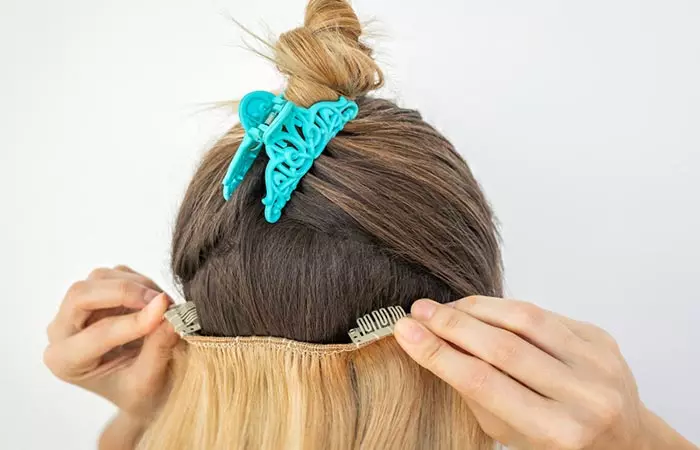
It is really important to remove all hair accessories and extensions before you tuck yourself in bed. Ideally, you should choose comfortable hairstyles to sleep in and let your hair be free of anything that could increase the level of dryness and breakage.
Most of us want to know how to sleep with hair so it looks good in the morning, but using alcohol-based sprays to style your hair for this purpose will only result in damage. The best way to protect your hair while sleeping is to remove all clips, ties, and tight accessories that can potentially get entangled in your hair.
6. Should You Tie Your Hair While Sleeping? Definitely Yes!
A question that you may often have about your hair might be – is it better to sleep with your hair up or down? Tying your hair in a loose braid or bun prevents it from getting tangled while you sleep. It also prevents the breakage that may result later when you try to ease out those tangles.
7. Avoid Metal Or Rubber Ties
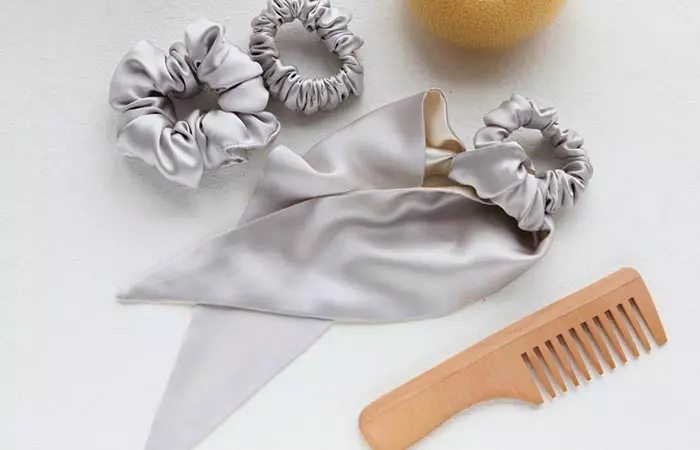
It is really important to pay attention to how you tie your hair while sleeping at night. Using ties that are made of plastic or rubber or those that have a metal clasp not only contributes to ridges in your hair but also causes friction, which leads to breakage.
Instead, choose cute hairstyles for bed using silk hair scrunches that will keep your hair safe at night.
8. Avoid A Dry Room
Dryness not only impacts your skin but also wreaks havoc on your hair. Apart from researching bedtime hairstyles and how to wear your hair to bed, you should also ensure that your room is not too dry and switch off the heater before you doze off. This will prevent your locks from drying out.
9. Comb Your Hair

Just like your teeth, your hair requires a tad bit of grooming before you get some beauty sleep. While you choose hairstyles to sleep in, give your strands a sweep with a comb or brush – but keep it minimal. Contrary to popular belief, there is no scientific proof that giving your hair 100 sweeps a day with a brush keeps it healthy.
10. Add Some Moisture
Just like your skin, even your hair requires enough moisture to remain nourished and regenerate. Sleeping with conditioner in your hair is one way to help your hair attain the level of moisture that it needs to stay healthy. However, make sure that you are using a hair mask made for this specific purpose because not all conditioners are suitable for overnight application.
A common question you may have is whether to sleep with your hair up or down. Scroll down for the answer.
Key Takeaways
- To avoid friction between hair strands and to promote hair health, apply hair oil regularly.
- Avoid sleeping with damp hair as it may weaken the protein bonds which leads to hair breakage.
- A silk pillowcase or hair cap minimizes friction and helps prevent hair damage while sleeping.
- Hair accessories and extensions may cause tangling and breakage. Hence it is recommended to remove them for promoting healthy hair growth.
Is It Better To Sleep With Your Hair Up Or Down?
Sleeping with your hair down may reduce the risk of hair breakage, especially for those with short hair. However, if you have curly or wavy hair, it is better to tie it up as sleeping with it down may cause frizz and flatten your curls. Knowing how to sleep with curly hair can prevent breakage. Tie your hair up with a loose silk scrunchie to protect it from damage and prevent tangling. It also reduces the chance of hair oils transferring to your face, thus minimizing breakouts. However, tight hairstyles cause stress on hair roots and lead to hair fall, so always opt for loose braids, buns, or ponytails. Whether you tie your hair up or leave it loose, use a silk pillowcase to reduce friction and help maintain your hair health.
 Quick Tip
Quick TipAvoid sleeping with the air conditioner on, as it may strip your hair of its moisture and lead to frizzy hair.
Now that you know how you can protect your hair at night, let us check out some ways to tie it securely.
How To Tie Your Hair At Night To Prevent Hair Loss
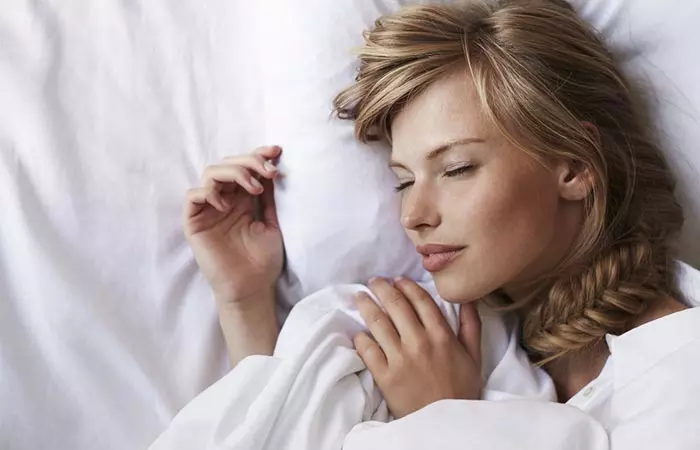
Are you in search of hairstyles for sleeping?
Do you often wonder, “Should I sleep with my hair up or down?” It is only natural for you to feel curious about this question so that you do not lose your hair.
There are several hairstyles that you can wear to bed that prevent damage and breakage.
You can try some simple yet protective hairstyles for sleeping:
- Try sleeping in braids to get wavy hair the next morning. You will wake up to a few kinks of waves in your hair, which is how you can protect them from breakage during the night.
- You may have often wondered – is it bad to sleep with your hair in a bun? As long as you are making a loose bun with your hair and tying it up with a silk scrunch, it is a safe way to style your hair for sleeping.
- Another way to practice braiding your hair before bed is to twist two sections of your hair together such that they look like a rope. Secure the twisted braids with silk ties to keep them in place.
Whether you choose to twist your hair before bed or sleep with your hair up, these hairstyles will surely secure your hair the right way.
Infographic: 3 Reasons You Should Choose Silk For Your Hair And Skin
Silk, a natural protein fiber, is widely used as a luxurious fabric material. While it has been used since ancient times, recent rediscoveries of its benefits for hair and skin have brought silk back into the limelight.
Check out the infographic to learn why you should choose silk for your hair and skin and which type suits you the best. Illustration: StyleCraze Design Team
When you are too tired and forget to protect your hair while sleeping, it can result in hair breakage and damage. To avoid this, you can resort to simple and quick steps such as applying hair oil or using a silk pillowcase or silk cap. All-natural hair night routines can make a big difference in your hair’s overall health. If you want to tie your hair to help you sleep better, you should tie it in a braid, loose bun, or two braids with silk ties before going to sleep. It will help avoid damage and keep your hair healthy.
Frequently Asked Questions
Why do I lose so much hair when I sleep?
Sleeping by itself is not known as a cause for hair fall – although lack of sleep leads to stress that results in hair loss. It is normal for humans to lose about 20 strands during sleep. However, any more may be caused due to breakage by friction or hormonal imbalances and warrant a visit to the medical professional.
Can a dirty bed cause hair loss?
No. Dirty beds or pillowcases are not scientifically proven to cause hair loss.
What are some common hair problems that can be caused by sleeping?
The friction between your hair and the pillow during sleep might lead to tangles, knots, split ends, and hair breakage. It may eventually lead to frizzy and matted hair commonly known as bedhead.
How often should you wash your hair if you’re trying to protect it while sleeping?
This depends on your hair type and how greasy it is. You can wash it weekly or once every 2-3 days. Avoid washing your hair daily as it may strip your hair of its natural oils.
Illustration: Best Ways To Protect Your Hair While Sleeping (Easy Tips)
_illustration.jpg.webp)
Image: Stable Diffusion/StyleCraze Design Team
Having trouble keeping your hair perfect all night? Watch this video to learn the best sleep bun technique that will rescue the day. Say goodbye to knots and welcome to perfectly styled hair in the morning.
References
Articles on StyleCraze are backed by verified information from peer-reviewed and academic research papers, reputed organizations, research institutions, and medical associations to ensure accuracy and relevance. Read our editorial policy to learn more.
- The structure of people’s hair
https://www.ncbi.nlm.nih.gov/pmc/articles/PMC4201279/ - The Hair Shedding Visual Scale: A Quick Tool to Assess Hair Loss in Women
https://www.ncbi.nlm.nih.gov/pmc/articles/PMC5336434/ - Hair fiber characteristics and methods to evaluate hair physical and mechanical properties
https://www.scielo.br/j/bjps/a/XZrwDJrKKXh4Q3JwswHJ4vq/?format=pdf&lang=en
Read full bio of Dr. Rekha Yadav
Read full bio of Arshiya Syeda
Read full bio of Ramona Sinha
Read full bio of Medha Deb







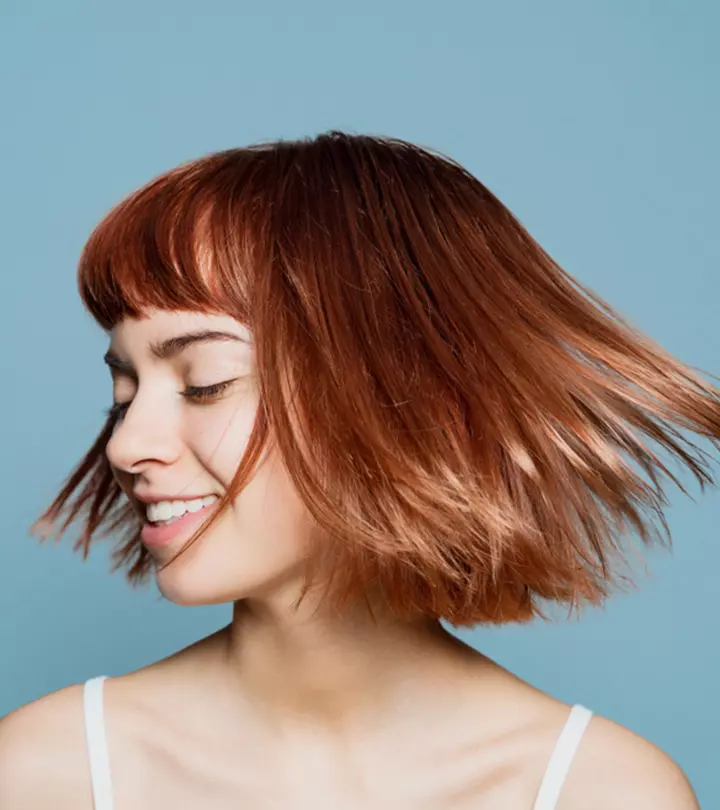


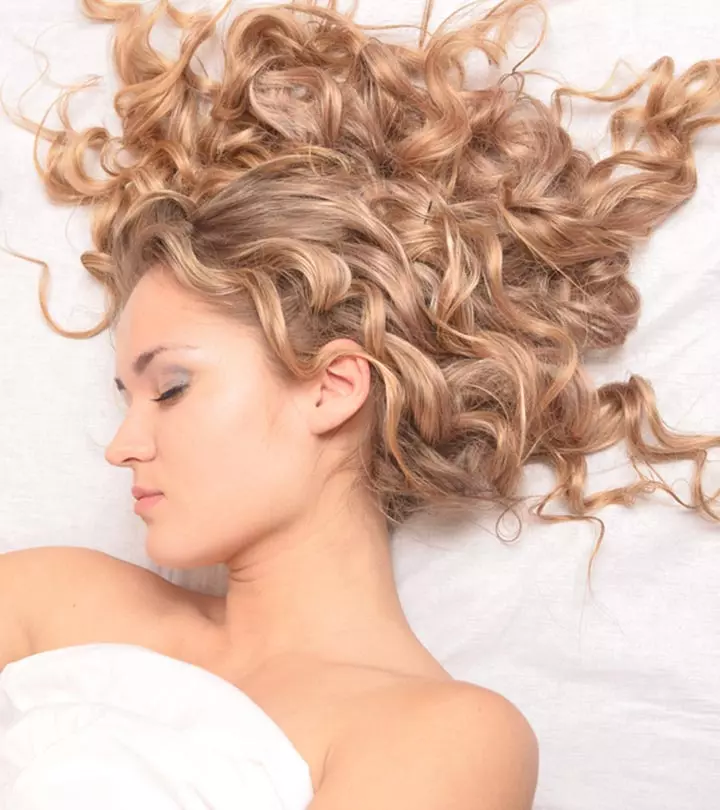
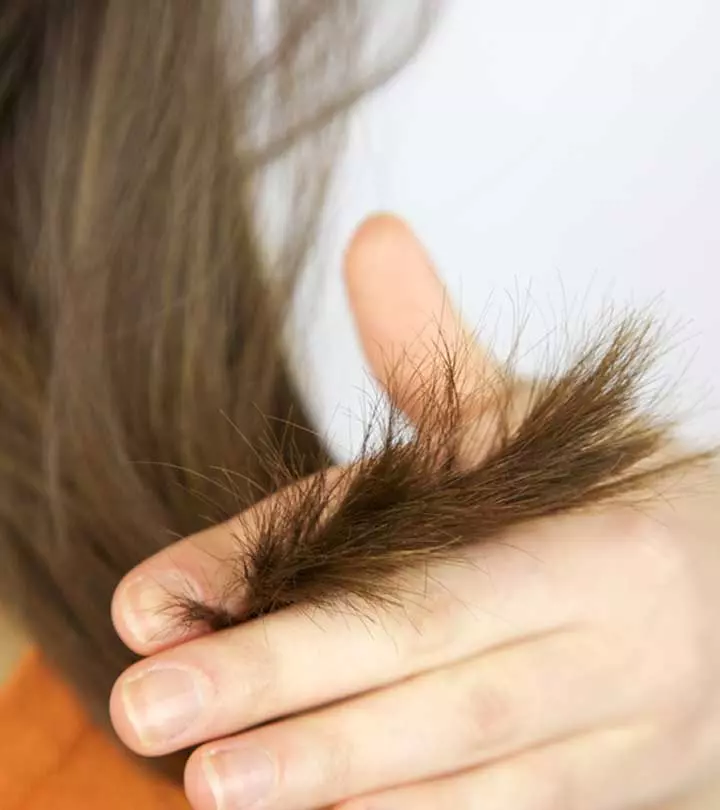
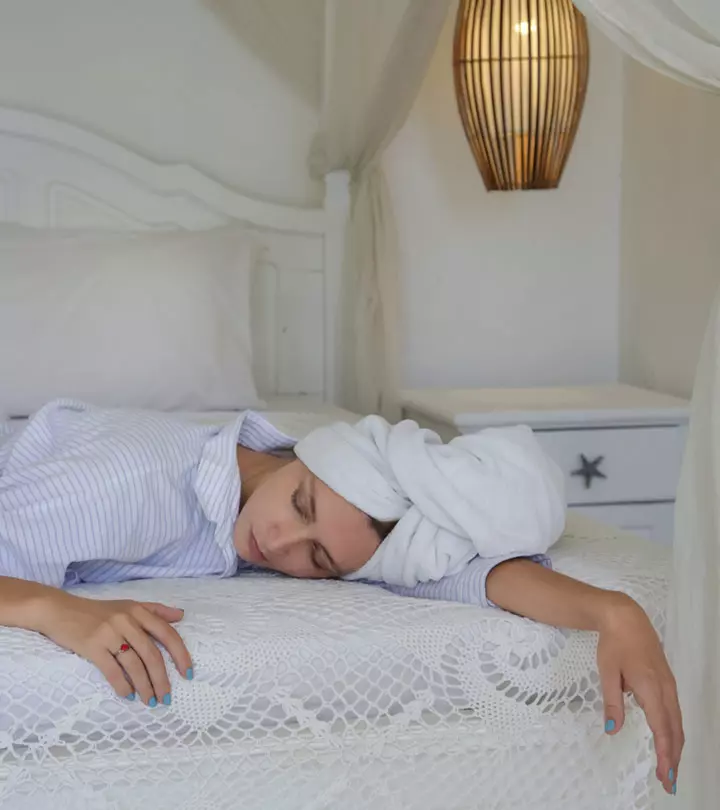
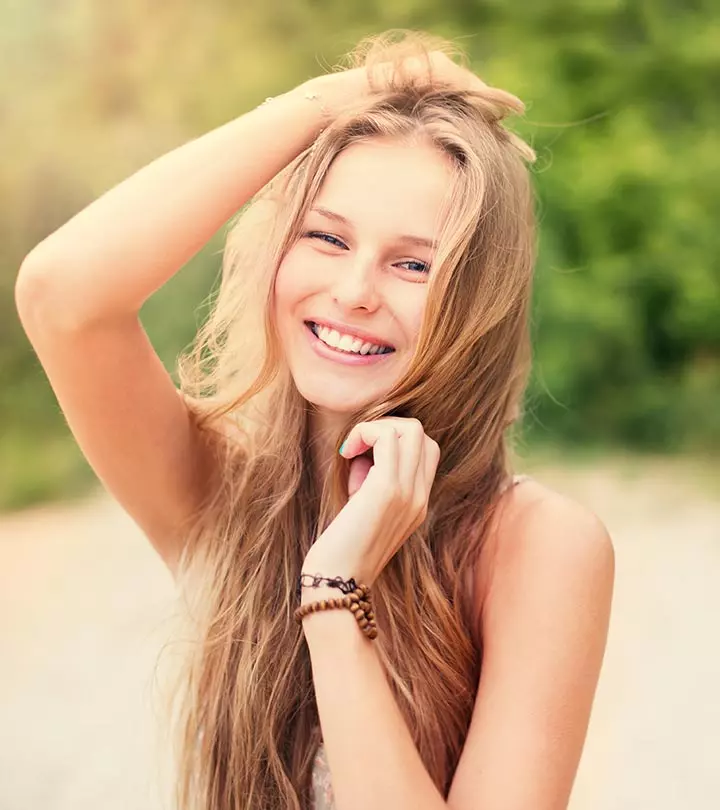
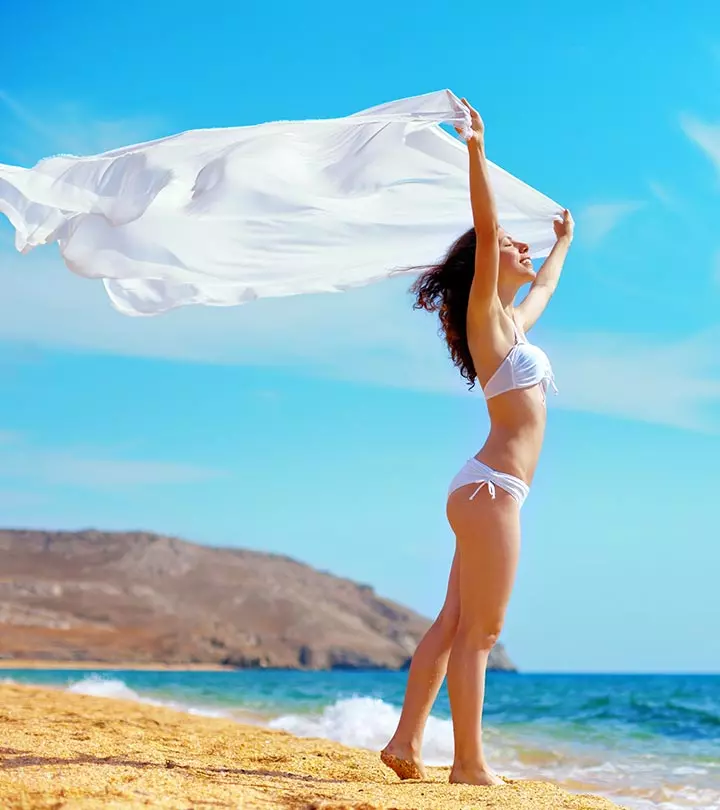
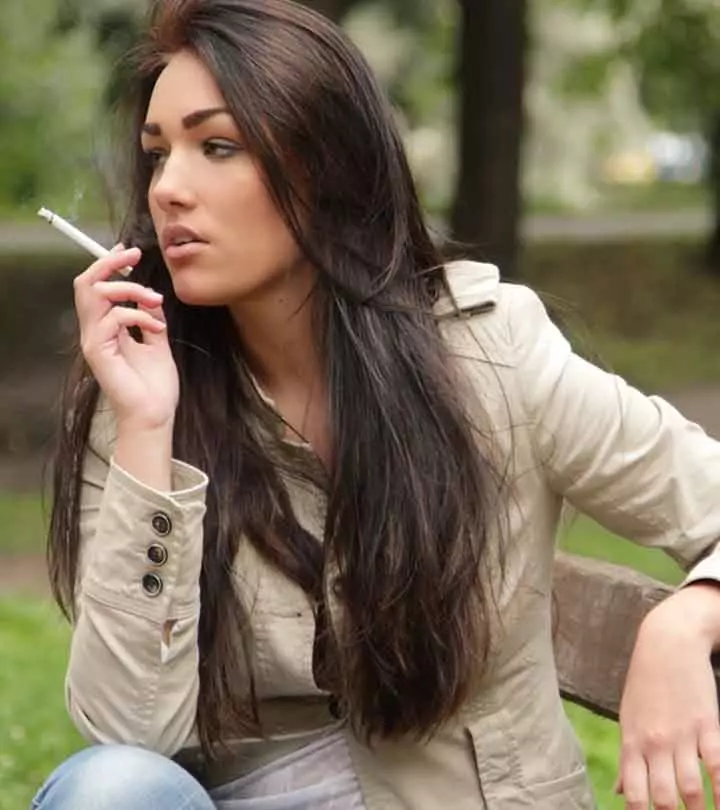



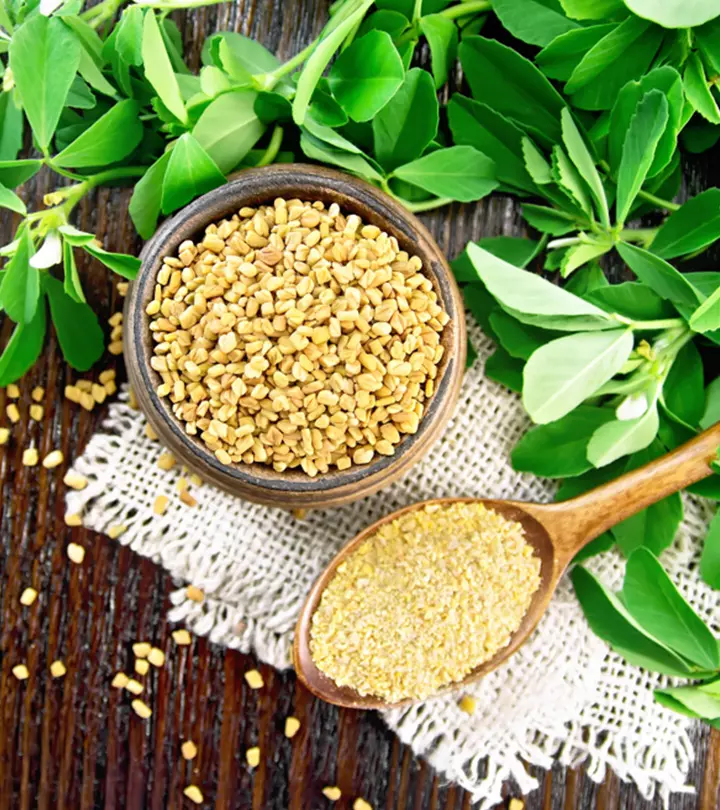

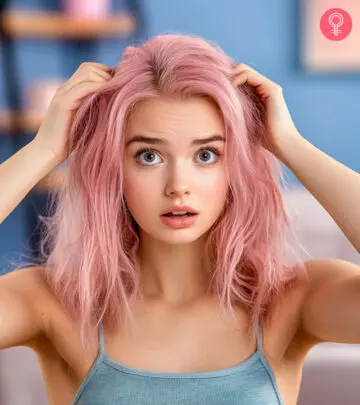

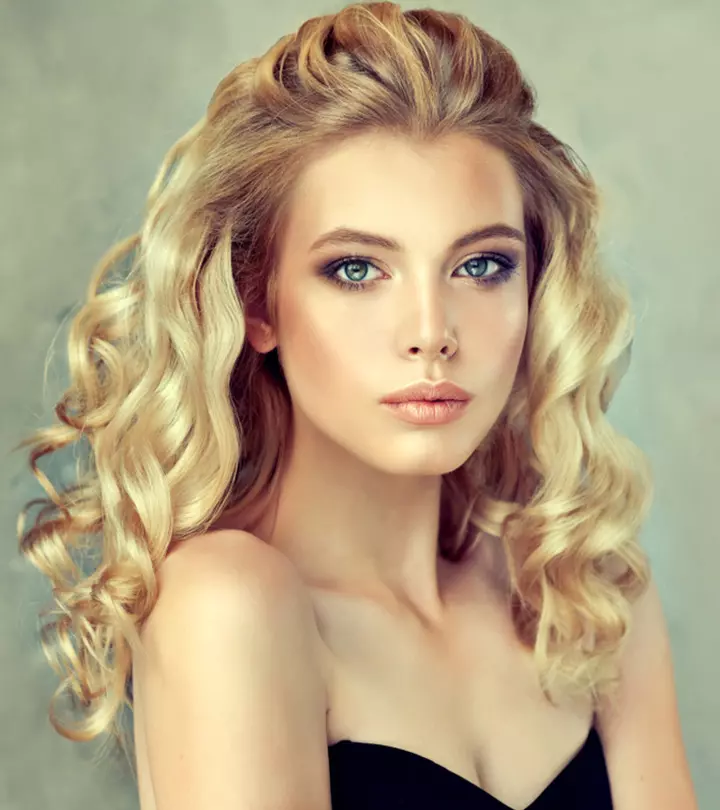


Community Experiences
Join the conversation and become a part of our empowering community! Share your stories, experiences, and insights to connect with other beauty, lifestyle, and health enthusiasts.